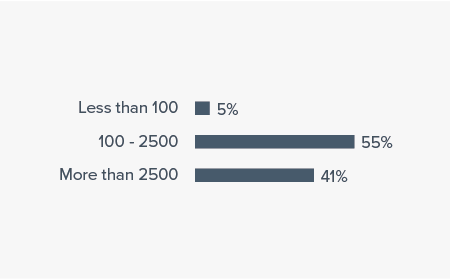Microsoft Power BI
Microsoft, the world’s largest software company, was founded in 1975 and has become a household name primarily due to its Windows operating system and Office suite. The vendor has a broad enterprise offering too, ranging from cloud to database to its ERP offering.
Like several competitors, Microsoft focuses heavily on providing cloud-based solutions. Microsoft Azure is already used by many customers as a cloud computing platform and infrastructure. The vendor offers a host of services and applications based on Azure. It can also be seen as a central hub for providing the company’s own software in the cloud. The platform is available through a global network of data centers managed by Microsoft and hosted by its partners. A number of other business software vendors also rely on Azure for their cloud infrastructure.
Microsoft has spread its BI capabilities across the Office, SharePoint and SQL Server product lines in the past few years, providing tools for formatted reporting, ad hoc reporting, analysis and dashboards. Microsoft SQL Server consists of multiple products including a relational database management system, data integration and data quality components, Analysis Services as a multidimensional database, and Reporting Services as a solution for formatted reporting. With the incorporation of Revolution R functionality to SQL Server, the product is also particularly interesting for advanced analytics scenarios.
In July 2015 Microsoft launched a new generation of its Power BI product line, which was initially introduced in 2013 as a different tool set. Today it is a cloud-based BI product consisting of Microsoft Power BI Desktop (a full client for ad hoc reporting, dashboards and analysis) and Power BI Service (a web client for content publishing and sharing). Power BI is marketed as an interactive tool for data visualization geared at enabling business users to analyze data and share insights predominantly via dashboards. Its pricing and the dominance of Microsoft products on office computers give Power BI huge traction in the market. Power BI is included in the Azure IoT Suite, and as part of Microsoft’s data science toolset.
The suite offers Azure ML as a framework for data analytics. Through an integrated development environment called ML Studio, users can build data models using drag-and-drop gestures and simple data flow diagrams. One unique advantage of Microsoft BI is that customers can leverage the vast knowledge of Microsoft technologies present in most enterprises throughout the world.

User & Use Cases
Microsofts products are predominantly used in mid-sized companies. Typically, customers use a Microsoft data management solution such as SQL Server and complement it with a Microsoft visualization solution. Power BI was introduced a couple of years ago as a cloud-based visualization product. Today, the solution is bundled in a number of other products including Office 365. This makes it particularly attractive for existing customers. Therefore, the products most frequently evaluated alongside Power BI are as diverse as Microsoft’s customer base itself. Besides data visualization, an impressive 62 percent of respondents use the product for advanced analytics. The product offers the possibility to visualize R Scripts using R visuals and can also be used as tool to display advanced analytics results.
Current vs. planned use
N=42
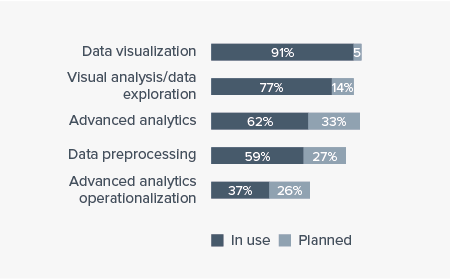
5 products most often evaluated in competition with Power BI
N=36
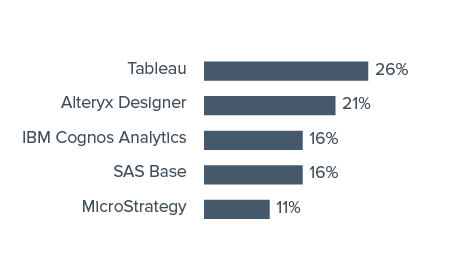
Total number of users per company
N=44
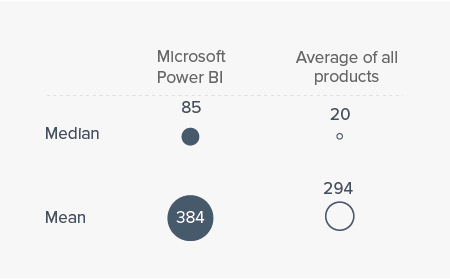
Advanced analytics users per company
N=44
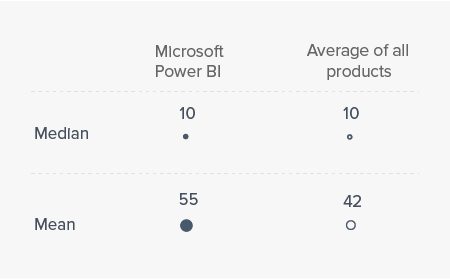
Advanced analytics users (as a percentage of all users)
N=44
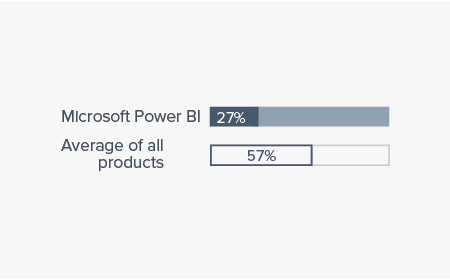
Company size (number of employees)
N=44
